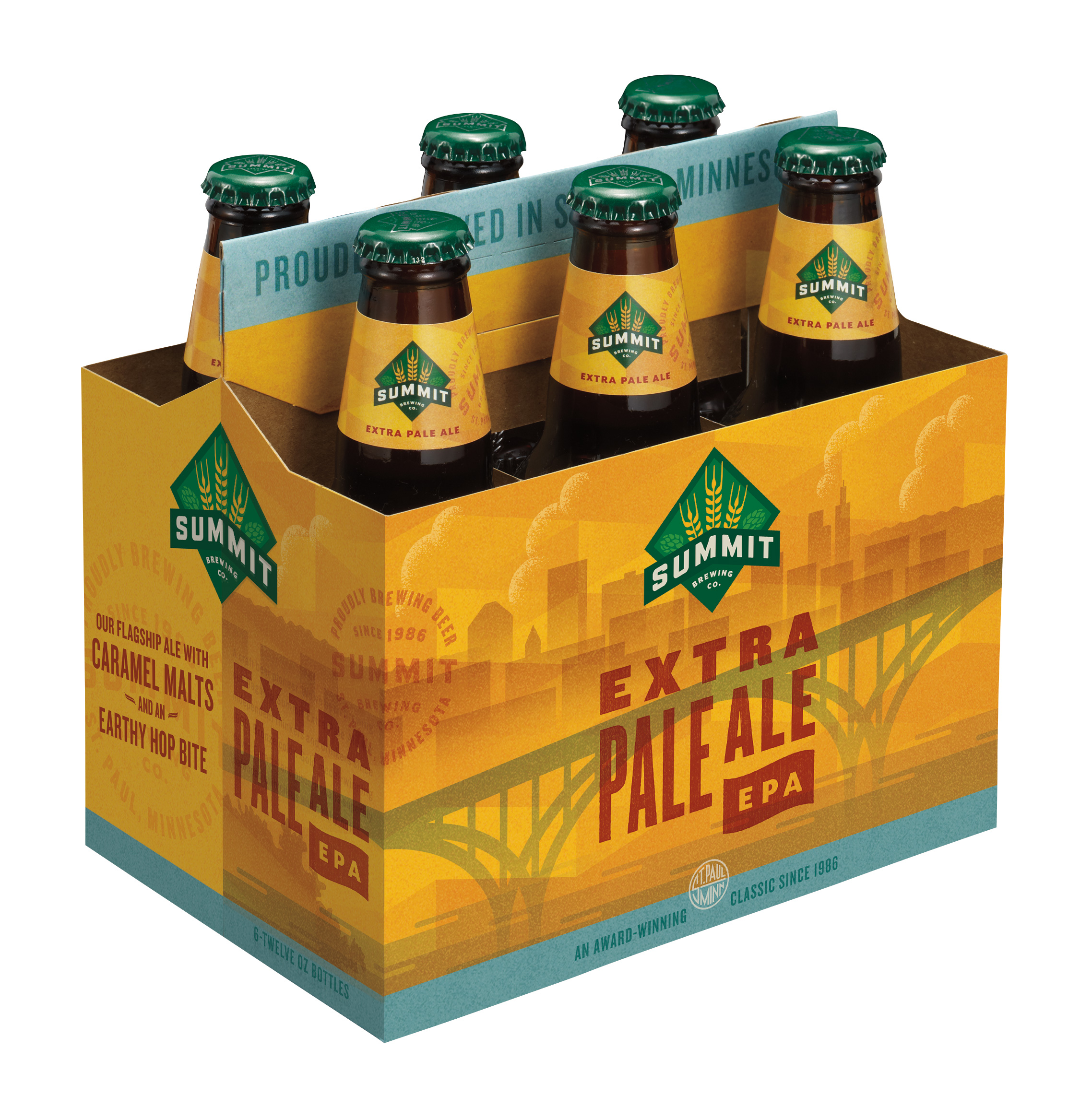The Pale Ale and the India Pale Ale: What’s the Difference?
When it comes to craft beer, the styles are endless. From stouts to sours, maibocks to Märzens, drinkers now-a-days can find any flavor they desire.
While some of these styles may seem completely foreign to one another, others appear to have very little variation. So much so that some may wonder, what really is the difference between these two brews?
This is often the case with Pale Ales and India Pale Ales. Though it may seem like the obvious answer is that India Pale Ales are a hoppier version of the Pale Ale, it’s not quite that simple.
So, we thought we’d break it down!
Which came first?

(credit Summit Brewing Company)
That would be the Pale Ale.
The pale amber colored brew first appeared on the scene in the early 1700’s. English brewers began to make beer using malt that had been roasted with a fuel that had a high carbon content and low smoke yield. This resulted in the beer having a lighter, or paler, look than the more common dark beers of the time. Thus, the name Pale Ale was born. More colloquially Pale Ales in draught form were referred to as “bitters” given their more pronounced hop flavor as compared to darker ales. The use of lighter colored malt, or “white” malt, also allowed for more of the hop flavor to shine through.
It was the only “hoppy” beer for about 100 years. Until the IPA came along.
Fact vs. Fiction
How the India Pale Ale came to be has a bit more fantasy to it.
It’s known that the first mention of an India Pale Ale was made in an Australian newspaper in 1829 where it was described as a hoppy beer made specifically for India.
A more common story that many might have heard is that English civil servants and employees of the East India Trading Company living in India as it was being colonized missed the beer from home. So, the shipping of export beers such as Porter and Pale Ale began. Merchants were worried the beer may arrive infected or stale so additional hops and an increase in alcohol level were initiated. Then, when the beer arrived it had become a hoppier version of the pale ales they had known. It’s unclear if this is true or not, as other beers were shipped without additives.
Genetic Makeup
From their inception to now, Pale Ales are known for having a balanced flavor profile with a medium body. While there is a bit of hop flavor, they tend to have more biscuit, cracker or bread notes.
Throughout the centuries the pale ale family has grown to include American Pale Ales, English Pale Ales, Blonde Ales and more. The English Pale Ale, much like our Extra Pale Ale, stays true to the original recipe. American Pale Ales tend to be a bit more bitter, while Blonde Ales are bit more malty in flavor.

(credit: Summit Brewing Company)
IPAs have also grown from their first brew. As was the case in 1829, IPAs’ main flavor comes from the hops used in the brew. The hop varietal can create a citrus note, fruity flavor or herbal taste.
With the explosion of craft beer, IPAs have grown into several categories – British, West Coast, New England/Hazy, Juicy and more. At Summit Brewing Company we have three of our own year-round – Sága IPA, Slugfest Juicy IPA and Triumphant Session IPA. The thing all these types have in common is each possess a hint of fruit or citrus with pronounced hop flavor. While sometimes the latter is stronger than the former, the brew almost always has a clean finish.
The Apple Doesn’t Fall Far From the Tree
When it comes to Pale Ales versus India Pale Ales, the brews share some characteristics. Both, for example, let the hop character shine a bit more than say a pilenser or stout.
However, hoppiness and bitterness are often (and easily) confused, and both are subjective to the drinker. This can be tricky when it comes to IPAs. One drinker may think a pale ale is more bitter than an IPA, and it may be if it uses a different hop variety than the IPA. However, that same IPA may have more hop flavor for its particular variety. Additionally, what one person may consider a bitter IPA, another may not think is bitter at all. Or, one individual could find and IPA not quite as hoppy as they may like but may really taste the hops in a pale ale.
When it comes down to it, a Pale Ale should have a nice hop character but medium build, whereas IPAs tend to have higher ABV and IBU.

(credit: Summit Brewing Company)


Leave a Reply